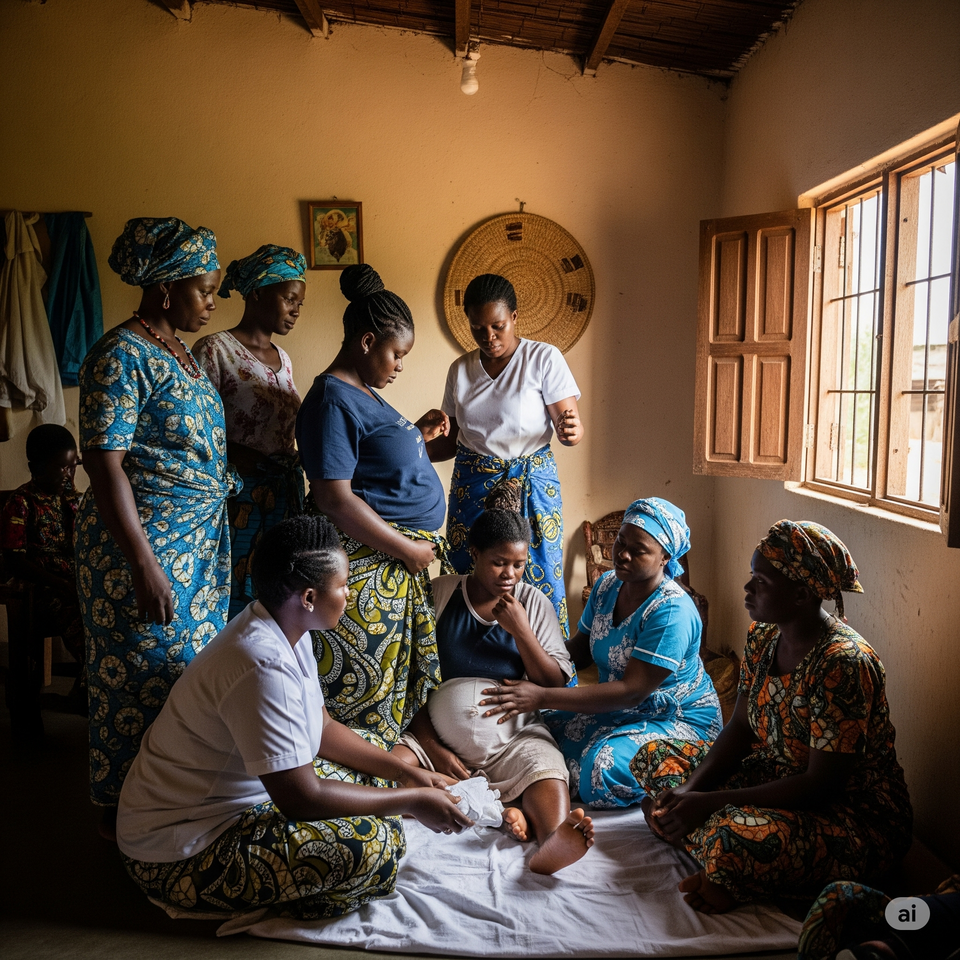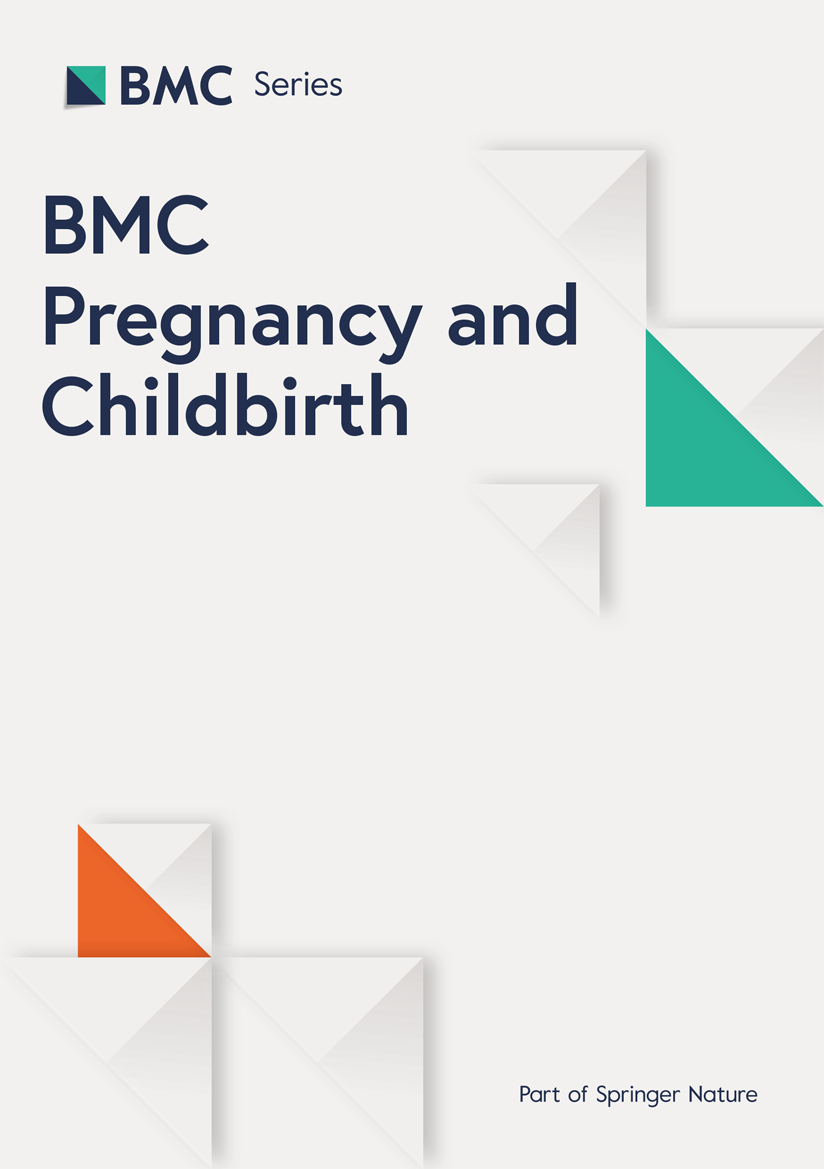Beyond the Statistics: Unpacking Homebirth and Women's Empowerment in Sierra Leone
Published in Healthcare & Nursing, Social Sciences, and General & Internal Medicine

Maternal mortality remains a stark global challenge, particularly in sub-Saharan Africa. Sierra Leone, in particular, faces one of the world's highest maternal mortality ratios. While significant efforts have been made to improve maternal health indicators, a recent study published in BMC Pregnancy and Childbirth, titled "Do disempowered childbearing women give birth at home in Sierra Leone? A secondary analysis of the 2019 Sierra Leone demographic health survey," delves into a critical, often overlooked aspect: the link between women's empowerment and the persistent practice of homebirth. This research offers vital insights, highlighting both progress and ongoing hurdles, and hinting at the profound human stories behind the numbers.
The Landscape of Childbirth in Sierra Leone: Progress Amidst Persistent Challenges
The study, a secondary analysis of data from 7,377 women in the 2019 Sierra Leone Demographic Health Survey (SLDHS), reveals a crucial trend: approximately 15.3% of women still had home childbirths for their last child. While this figure represents a significant reduction from 72% in 2008 and 44% in 2013, indicating a positive shift towards facility-based deliveries, it underscores that a substantial portion of births still occur outside skilled healthcare settings.
This progress is a testament to increased investments by the Sierra Leonean government and its partners. The 2010 free healthcare policy for pregnant women, lactating mothers, and children under five, along with initiatives like the Health Sector Recovery Plan, have expanded maternity care facilities and trained more midwives and healthcare providers. These are tangible successes in strengthening the health system and improving access to care.
However, the journey is far from over, and the challenges are multifaceted. The study identifies several key factors associated with higher odds of homebirth:
- Low Knowledge Levels: Women with limited knowledge had significantly higher odds of homebirth. This reflects a lack of access to crucial health information, hindering informed decisions about pregnancy, labor, and potential complications.
- Inability to Refuse Intimate Partner Violence (IPV): A deeply concerning finding was that women who lacked the power to refuse the idea of IPV were more likely to give birth at home. This points to the pervasive impact of gender-based violence and patriarchal norms that disempower women and restrict their autonomy over health decisions.
- Limited Antenatal Care (ANC) Visits: Women with no or fewer than four ANC visits were more prone to homebirth. ANC visits are crucial for monitoring pregnancy, identifying risks, and educating women about safe delivery practices.
- Distance to Health Facilities: For many women, geographical barriers and the distance to a health facility remained a major problem, directly influencing their choice of homebirth.
Interestingly, the study found no statistically significant association between a woman's general decision-making power (e.g., over her own health, household purchases) and home birth. This complex finding suggests that while broader empowerment is essential, specific vulnerabilities like knowledge gaps and the threat of IPV exert a more direct influence on childbirth choices.
A critical underlying challenge, perhaps one of the "untold stories," is the quality of care within existing health facilities. Despite improvements in access, high maternal mortality rates persist in Sierra Leone, with recent reports highlighting issues like misdiagnosis and non-adherence to standard treatment guidelines, suggesting that many maternal deaths occur within healthcare facilities. This indicates a complex problem where simply increasing access to facilities isn't enough; the care provided within them must also be of high quality and instil trust.
Furthermore, the devastating 2013-2016 Ebola outbreak severely weakened Sierra Leone's healthcare system, undoubtedly impeding further reductions in homebirths and contributing to the continued high maternal and infant mortality rates. The ripple effects of such a crisis on a fragile health infrastructure are profound and long-lasting, presenting an invisible barrier to progress.
Implications for a Brighter Future: Beyond the Data Points
The findings of this study offer clear directives for future interventions and research, emphasizing a holistic approach to women's empowerment and maternal health.
-
Prioritizing Knowledge and Education: Efforts must intensify to improve women's health literacy through both girl-child and adult education initiatives, alongside increased media exposure to vital health information. This isn't just about reading and writing; it's about empowering women with the understanding to make informed health decisions for themselves and their families.
-
Addressing Gender-Based Violence and Societal Norms: The strong link between the inability to refuse IPV and homebirth is a powerful call to action. Future research and interventions must directly address gender-based violence and unequal power relations that permeate societal norms. This requires legal reforms, community-level programs challenging patriarchal systems, and fostering environments where women feel safe and supported in asserting their rights, including their reproductive health choices.
-
Strengthening Healthcare Infrastructure and Quality: While distance to facilities is a problem, the concern about quality of care in facilities cannot be overlooked. Future research should explore specific interventions to improve diagnostic accuracy, adherence to treatment protocols, and overall patient experience within health facilities to build trust and encourage institutional deliveries. Improving roads and transport infrastructure remains a tangible and necessary step to physically bridge the gap between communities and health services.
-
Qualitative Insights for Deeper Understanding: The study's quantitative nature provides broad associations. Future research could benefit immensely from qualitative studies that delve into the nuanced reasons behind women's choices, particularly those living in rural areas or facing significant socio-economic disadvantages. What are the specific cultural norms that influence homebirth? What are the individual experiences of disrespectful care that deter women from facilities? What stories lie behind the statistics of those who, despite being "disempowered," still choose homebirth? These narratives hold invaluable keys to truly understanding the complexities.
The Untold Stories: Faces Behind the Figures
Behind every statistic in this study are countless individual stories. The 15.3% of women who gave birth at home are not just data points; they are mothers, sisters, and daughters navigating complex realities. Imagine a young woman in a remote village, her knowledge limited by lack of access to education and media, facing the onset of labor. The nearest clinic is miles away, the road impassable during the rainy season, and the cost of transport prohibitive. Perhaps she has heard stories of misdiagnosis or disrespectful treatment at the health facility, or culturally, she trusts the familiar hands of a traditional birth attendant within her community. For her, a homebirth isn't a choice of defiance but often a decision shaped by stark limitations and a desire for comfort and perceived safety in a challenging environment.
Then there are the women who endure intimate partner violence, whose voices are silenced, and whose autonomy over their own bodies and health is stripped away. Their decision to give birth at home might not be a conscious choice, but a tragic reflection of their lack of power and the systemic oppression they face. The fear of seeking external help, or the inability to even voice such a desire, becomes a silent determinant of their childbirth experience.
The research also implicitly tells the story of resilience – the determination of the Sierra Leonean people and the healthcare workers striving to improve maternal health despite immense resource constraints and the lingering scars of the Ebola crisis. It's the story of communities grappling with evolving traditions and the push for modernization, of advocates working tirelessly to empower women one conversation at a time.
Our study serves as a critical mirror, reflecting the ongoing journey of maternal healthcare in Sierra Leone. It is a powerful reminder that true progress demands not just policy changes and infrastructure development, but also a deep understanding of societal dynamics, the empowerment of women at every level, and an unwavering commitment to ensuring that every mother has the knowledge, safety, and respect she deserves during one of life's most vulnerable moments. The success stories of reduced homebirths offer hope, but the challenges articulated by the research compel us to listen to untold stories and intensify our efforts to create a future where every birth is a safe and empowering experience.
Follow the Topic
-
BMC Pregnancy and Childbirth

This is an open access, peer-reviewed journal that considers articles on all aspects of pregnancy and childbirth. It welcomes submissions on the biomedical aspects of pregnancy, breastfeeding, labor, maternal health, maternity care, trends and sociological aspects of pregnancy and childbirth.
Related Collections
With Collections, you can get published faster and increase your visibility.
Diagnosis and management of gestational diabetes
BMC Pregnancy and Childbirth is calling for submissions to our Collection on Diagnosis and management of gestational diabetes.
Gestational diabetes mellitus (GDM) is a form of glucose intolerance that develops during pregnancy, affecting both maternal and fetal health. This condition poses risks for complications such as prematurity, increased birth weight, hypoglycemia, respiratory issues in newborns, and long-term metabolic disorders in both mothers and offspring. Advancements in research on gestational diabetes have led to improved screening techniques and a deeper understanding of the condition's implications for maternal and neonatal health. With the increasing prevalence of obesity and sedentary lifestyles, understanding the underlying mechanisms of GDM is crucial for developing effective diagnostic and management strategies.
The Collection invites researchers and clinicians in fields including maternal-fetal medicine, endocrinology, obstetrics, nutrition, and perinatology to contribute research that explores topics including, but not limited to, the role of lifestyle interventions, dietary modifications, pharmacological treatments in managing GDM, long-term implications of gestational diabetes for mothers and children, and enhancements in screening and monitoring patients throughout pregnancy.
All manuscripts submitted to this journal, including those submitted to collections and special issues, are assessed in line with our editorial policies and the journal’s peer review process. Reviewers and editors are required to declare competing interests and can be excluded from the peer review process if a competing interest exists.
Publishing Model: Open Access
Deadline: Jun 08, 2026
Bleeding disorders in pregnancy
BMC Pregnancy and Childbirth is calling for submissions to our Collection on Bleeding disorders in pregnancy.
Bleeding disorders during pregnancy encompass a range of conditions that can pose significant risks to both maternal and fetal health. Conditions such as von Willebrand disease (VWD), hemophilia, and other coagulation factor deficiencies are particularly critical to identify and manage throughout the perinatal period. Addressing bleeding disorders during pregnancy is crucial for minimizing complications, including hemorrhage during labor and delivery, which can lead to severe morbidity and mortality. It is crucial to understand the underlying mechanisms, risk factors, treatments, and clinical outcomes of these disorders to improve maternal and fetal outcomes.
The Collection invites researchers and clinicians in fields including maternal-fetal medicine, obstetrics, hematology, and perinatology, to contribute research that explores topics including, but not limited to, advances in screening methods, genetic counseling, development of safer anticoagulants, individualized treatment plans that improve understanding of bleeding disorders and their management.
All manuscripts submitted to this journal, including those submitted to collections and special issues, are assessed in line with our editorial policies and the journal’s peer review process. Reviewers and editors are required to declare competing interests and can be excluded from the peer review process if a competing interest exists.
Publishing Model: Open Access
Deadline: May 25, 2026





Please sign in or register for FREE
If you are a registered user on Research Communities by Springer Nature, please sign in